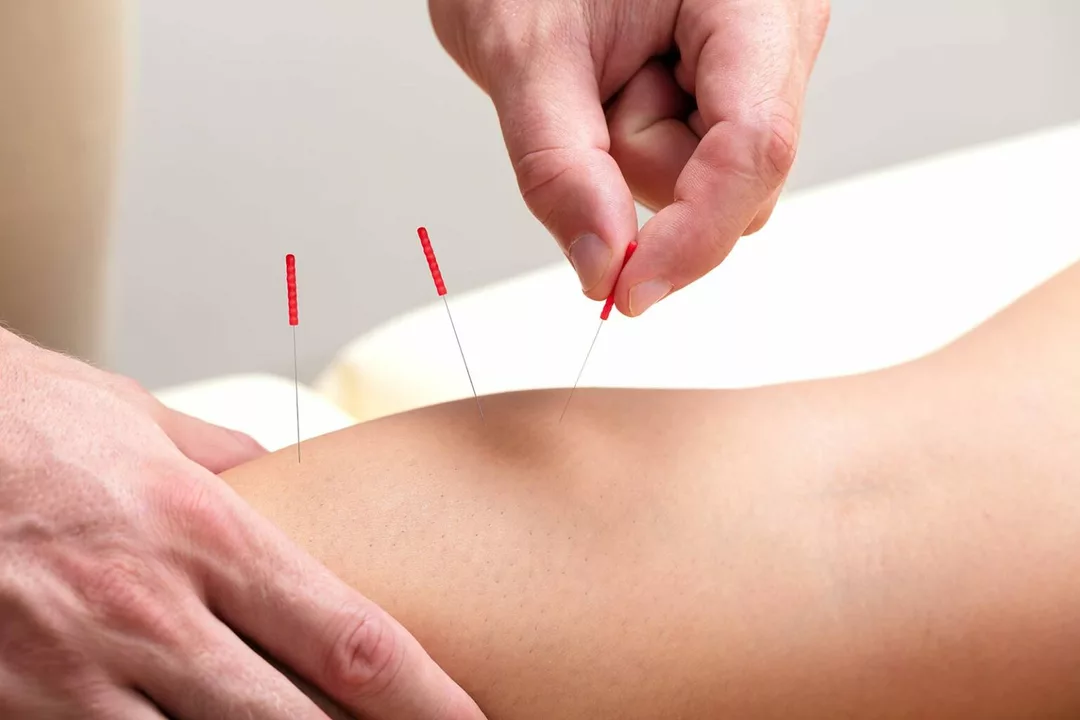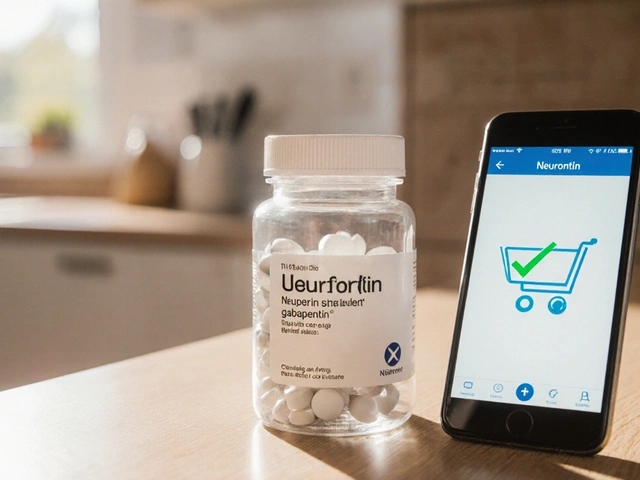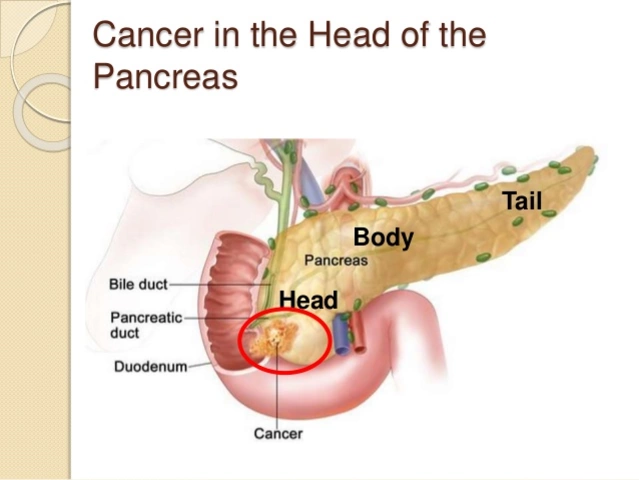
Understanding Arthritis and Its Impact on Life
As someone who has personally experienced arthritis pain, I understand how debilitating and frustrating it can be. Arthritis is a condition that affects millions of people around the world and can cause a significant impact on our daily lives. It can limit our mobility, affect our ability to work, and even interfere with our social interactions. For many people, finding an effective way to manage arthritis pain is a top priority.
There are numerous treatment options available for managing arthritis pain, ranging from over-the-counter medications to more invasive procedures. One alternative treatment that has gained popularity in recent years is acupuncture. In this article, I will explore whether acupuncture can help with arthritis pain, and discuss its potential benefits and drawbacks.
The Science Behind Acupuncture
Acupuncture is a traditional Chinese medicine (TCM) practice that has been used for thousands of years to treat various ailments. The treatment involves the insertion of thin needles into specific points on the body, known as acupuncture points or acupoints. The underlying theory behind acupuncture is that our bodies have a network of energy pathways called meridians, which connect our internal organs to the surface of our skin. When these pathways are blocked or imbalanced, it can lead to illness, pain, or other health issues.
By stimulating certain acupoints, acupuncture aims to restore the balance of energy and promote the body's natural healing process. While the exact mechanisms of how acupuncture works are not fully understood, studies have shown that it can have a positive impact on pain relief and overall well-being.
Acupuncture and Arthritis Pain: What Does the Research Say?
Several studies have been conducted to determine the effectiveness of acupuncture in treating arthritis pain. Some studies have shown promising results, with participants reporting a significant reduction in pain and improved function after undergoing acupuncture treatment. However, other studies have found no significant difference between acupuncture and a placebo treatment.
One of the challenges in evaluating the effectiveness of acupuncture for arthritis pain is the varied nature of the studies. Differences in the acupuncture techniques used, the duration and frequency of treatment sessions, and the types of arthritis being treated can all impact the outcomes. As a result, it can be difficult to draw definitive conclusions about the effectiveness of acupuncture for arthritis pain.
How Acupuncture Can Help with Arthritis Pain
Despite the mixed results from research studies, many people with arthritis report experiencing relief from their pain after undergoing acupuncture treatment. There are several ways in which acupuncture may help to alleviate arthritis pain:
- Reducing inflammation: Acupuncture has been shown to have anti-inflammatory effects. By reducing inflammation in the affected joints, it can help to relieve pain and stiffness associated with arthritis.
- Stimulating the release of endorphins: Acupuncture is believed to stimulate the release of endorphins, which are natural pain-relieving chemicals produced by the body. This can help to reduce the perception of pain and increase overall comfort.
- Improving blood circulation: By stimulating acupuncture points, the treatment can help to improve blood circulation in the affected areas, promoting healing and reducing pain.
It is worth noting that the effectiveness of acupuncture may vary depending on the individual and the type of arthritis being treated. Some people may experience significant relief from their pain, while others may not notice any improvement.
Are There Any Risks or Side Effects?
Acupuncture is generally considered to be a safe and low-risk treatment option for arthritis pain. However, as with any medical procedure, there are some potential risks and side effects to be aware of:
- Infection: As needles are inserted into the skin, there is a small risk of infection if the needles are not properly sterilized. It is important to choose a qualified and experienced acupuncturist to minimize this risk.
- Bruising or bleeding: In some cases, acupuncture can cause minor bruising or bleeding at the needle insertion sites. This is generally not a cause for concern and should resolve on its own.
- Dizziness or fainting: Some people may experience dizziness or fainting during an acupuncture session. If you have a history of fainting or are prone to feeling lightheaded, it is important to inform your acupuncturist before beginning treatment.
If you have any concerns about the safety of acupuncture for your arthritis pain, it is always best to consult with your healthcare provider before beginning treatment.
Combining Acupuncture with Other Arthritis Treatments
While acupuncture may provide some relief from arthritis pain on its own, it is often most effective when used in conjunction with other treatments. By combining acupuncture with other pain management strategies, such as medication, physical therapy, and lifestyle changes, you can create a comprehensive and individualized treatment plan for your arthritis pain.
It is important to work closely with your healthcare provider to determine the best combination of treatments for your specific needs. They can help you to develop a holistic approach to managing your arthritis pain and improving your overall quality of life.
Conclusion: Can Acupuncture Help with Arthritis Pain?
While the research on acupuncture for arthritis pain is mixed, there is evidence to suggest that it can provide relief for some individuals. Acupuncture has the potential to reduce inflammation, stimulate the release of endorphins, and improve blood circulation, all of which can contribute to pain relief.
If you are considering acupuncture as a treatment option for your arthritis pain, it is important to consult with your healthcare provider and choose a qualified and experienced acupuncturist. Combining acupuncture with other treatments and adopting a holistic approach to pain management can help to improve your overall quality of life and provide some much-needed relief from arthritis pain.





Annie Tian
May 13, 2023 AT 00:11I completely understand the daily grind arthritis forces upon us!!! It’s like every joint decides to throw a tantrum at the most inconvenient moments. But here's the bright side-there are always new avenues to explore for relief, and acupuncture is one of those promising options. Even if you’re skeptical, give it a try and see how your body reacts; sometimes the mind‑body connection can surprise you!!! Stay hopeful, stay active, and keep looking for solutions that bring you comfort.
April Knof
May 18, 2023 AT 19:05Acupuncture’s roots run deep within traditional Chinese culture, where balance and harmony have been cultivated for millennia. Historically, practitioners studied the flow of Qi along meridians, using needles as tools to restore equilibrium. Modern adaptations still honor those principles, blending ancient wisdom with contemporary medical insights. It’s fascinating how a practice so old can find relevance in today’s pain‑management strategies.
Tina Johnson
May 24, 2023 AT 13:58While many laud acupuncture as a panacea, the empirical evidence remains inconclusive. A critical examination reveals methodological flaws in numerous trials, such as inadequate blinding and small sample sizes. Consequently, the purported benefits may be attributable to placebo effects rather than any physiological mechanism. One must approach such claims with a measured skepticism and prioritize rigorously vetted treatments.
Sharon Cohen
May 30, 2023 AT 08:51Isn’t it just riveting how every new study sways the pendulum back and forth? One moment we herald acupuncture as a miracle, the next we label it as quackery-all while patients sit in still‑pain, hoping for relief. The drama of scientific discourse seldom considers the human cost, and the spotlight on conflicting data often eclipses lived experiences.
Rebecca Mikell
June 5, 2023 AT 03:45I think it’s valuable to share personal successes and setbacks alike, fostering a community where we can learn from each other. If acupuncture helped you, detail the protocol-needles used, session frequency, duration-so newcomers can gauge what might work for them. Likewise, if it didn’t, your honesty can prevent others from false hope. Collaboration strengthens our collective understanding.
Ellie Hartman
June 10, 2023 AT 22:38From a mentoring perspective, it’s essential to set realistic expectations before embarking on any treatment. Start by consulting a licensed acupuncturist, discuss your medical history, and ask about specific points targeted for arthritis. Monitoring pain levels before and after sessions can provide tangible data to assess efficacy. Remember, a supportive network-friends, family, health professionals-can amplify positive outcomes.
Alyssa Griffiths
June 16, 2023 AT 17:31One cannot ignore the hidden agenda of pharmaceutical conglomerates that flood the market with cheap, addictive painkillers while marginalizing ancient therapies!!! The suppression of acupuncture in mainstream medicine isn’t coincidence; it’s a calculated effort to maintain profit streams!!! Patients deserve to know the full spectrum of options, free from corporate manipulation!!!
Jason Divinity
June 22, 2023 AT 12:25Consider the philosophical implications of manipulating energy pathways: we are not merely inserting metal to elicit a response, but engaging with the subtle architecture of the human condition. When a needle pierces a point, it may catalyze a cascade of neurochemical events, aligning the soma with the cosmos. Such an elegant interplay between body and mind exemplifies the profound unity that underlies all therapeutic practice.
andrew parsons
June 28, 2023 AT 07:18Ethical considerations demand that we promote treatments grounded in robust evidence, lest we mislead vulnerable individuals. It is morally incumbent upon healthcare providers to disclose both benefits and limitations transparently. 🙏📚
Sarah Arnold
July 4, 2023 AT 02:11Acupuncture can actually complement conventional arthritis management in several meaningful ways. First, it may reduce inflammation by stimulating the release of anti‑inflammatory cytokines, which can alleviate swelling in affected joints. Second, the mechanical stimulation of acupoints often triggers endogenous endorphin production, providing natural analgesia without the side effects of opioids. Third, improved microcirculation at needle sites can enhance nutrient delivery and waste removal, fostering tissue repair. Fourth, the holistic nature of acupuncture encourages patients to adopt healthier lifestyle choices, such as regular low‑impact exercise and balanced nutrition, which further support joint health. Fifth, many individuals report a heightened sense of relaxation and stress reduction after sessions, which can indirectly diminish pain perception. Sixth, because acupuncture is minimally invasive and generally well‑tolerated, it offers a viable option for patients who cannot tolerate NSAIDs or other pharmacologic agents. Seventh, integrating acupuncture with physical therapy can synergistically improve range of motion, making rehabilitation more effective. Eighth, the personalized treatment plans crafted by skilled acupuncturists address each patient’s unique symptom profile, rather than applying a one‑size‑fits‑all approach. Ninth, regular acupuncture may help modulate the autonomic nervous system, balancing sympathetic and parasympathetic activity, which has been linked to chronic pain reduction. Tenth, for those with co‑existing conditions like fibromyalgia or chronic fatigue, acupuncture can address overlapping symptomatology, providing broader therapeutic benefits. Eleventh, the patient‑practitioner interaction during sessions can foster trust and empower individuals to take an active role in their health journey. Twelfth, studies, while mixed, often show statistically significant improvements in pain scores for acupuncture groups versus sham controls, indicating a real effect beyond placebo. Thirteenth, insurance coverage for acupuncture is expanding, making it more accessible to a wider population. Fourteenth, ongoing research continues to elucidate the mechanisms behind needle‑induced analgesia, promising even more refined applications in the future. Finally, the cumulative effect of these benefits can lead to a meaningful improvement in quality of life, allowing individuals with arthritis to engage more fully in daily activities and social interactions.
Rajat Sangroy
July 9, 2023 AT 21:05Give it a go and feel the difference yourself!
dany prayogo
July 15, 2023 AT 15:58Ah, the eternally polarizing debate surrounding needles versus pills-how delightfully predictable! While some zealously champion acupuncture as the ultimate panacea for every ache, others dismiss it with an almost theatrical contempt, clinging to the comforting certainty of pharmaceutical certainty. Yet, let us not forget that scientific inquiry itself is a tapestry woven from both triumphs and missteps, and to condemn a practice solely because it does not fit neatly into a binary schema is, frankly, a display of intellectual laziness. Moreover, the very notion that a practitioner inserts needles into defined points with the hope of coaxing the body into a state of equilibrium presupposes a level of physiological nuance that many skeptics are unwilling to entertain. In contrast, the pharmaceutical industry, with its opaque lobbying corridors and profit‑driven imperatives, often promotes medications that merely mask symptoms rather than address underlying dysregulation. Therefore, before we consign acupuncture to the realm of fringe pseudoscience, perhaps we ought to allocate a fraction of our critical faculties to a balanced appraisal, one that acknowledges both the limitations and the potential merits borne out by a growing, albeit imperfect, body of research. In doing so, we preserve the integrity of discourse and, more importantly, keep the door open for integrative approaches that may one day render the current dichotomy obsolete.